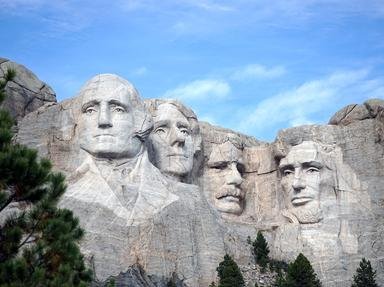Quiz Answer Key and Fun Facts
1. This the most visited site in South Dakota. The original name of this mountain was "The Six Grandfathers". By what name so we know it today?
2. What national park, noted for its rugged landscape, is located in southwestern South Dakota?
3. South Dakota is where buffalo roam. What is the name of the area where you might find them?
4. In Custer County, South Dakota, arises a massive sculpture depicting what native American legend?
5. South Dakota once had a significant gold mining industry. What is the special name given to gold that was extracted?
6. Particularly in eastern South Dakota, corn is the dominant crop. Human consumption is not the main purpose but to feed cattle and hogs. What is the name of the building in Mitchell, South Dakota, that was erected to honor this crop?
7. The Oahe Dam near Pierre, South Dakota was completed in 1962 and was dedicated by John F. Kennedy on August 7, 1962. What river does it span?
8. What is the South Dakota State Bird which attracts thousands of game bird hunters each year?
9. There are many cities that have the name "Falls". What is the name of South Dakota city that is the state's commercial hub and whose name is derived from the river it straddles?
10. The wagons are loaded with the dead bodies of one of the most horrible massacres of native Americans in South Dakota. Where did this take place? Dee Brown wrote of it.
Source: Author
Rehaberpro
This quiz was reviewed by FunTrivia editor
Tizzabelle before going online.
Any errors found in FunTrivia content are routinely corrected through our feedback system.

